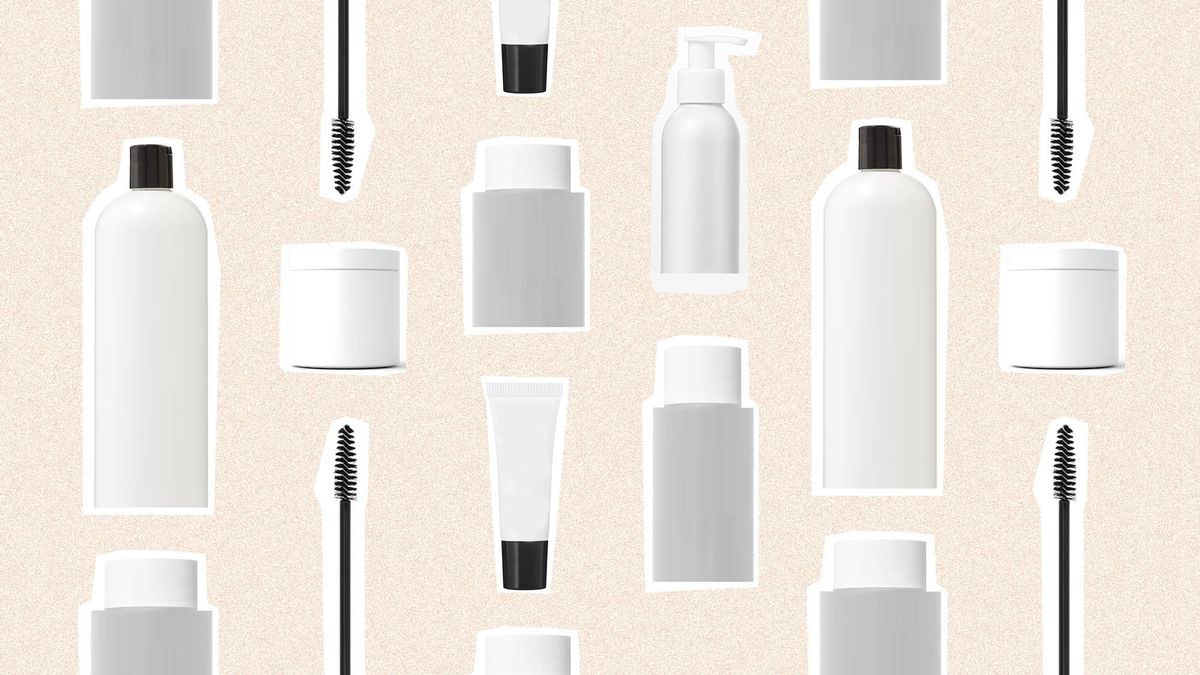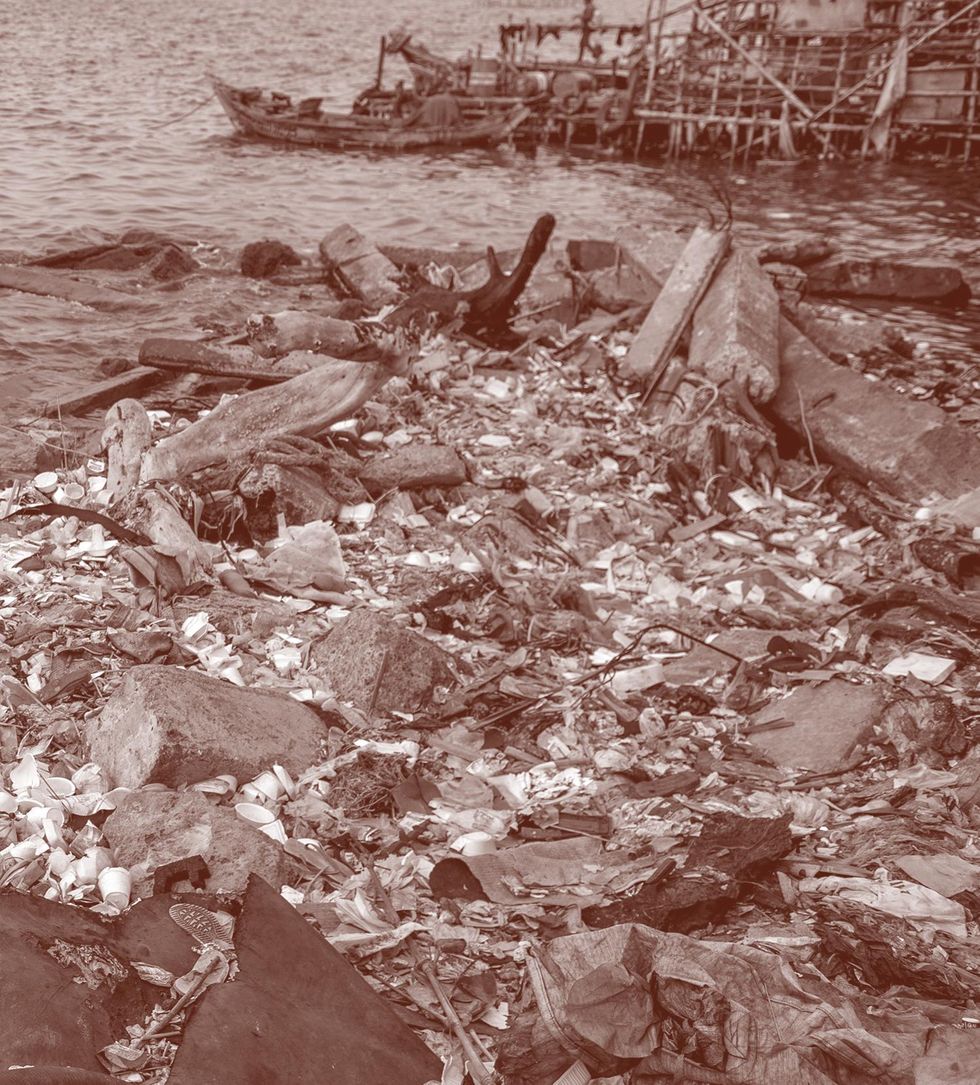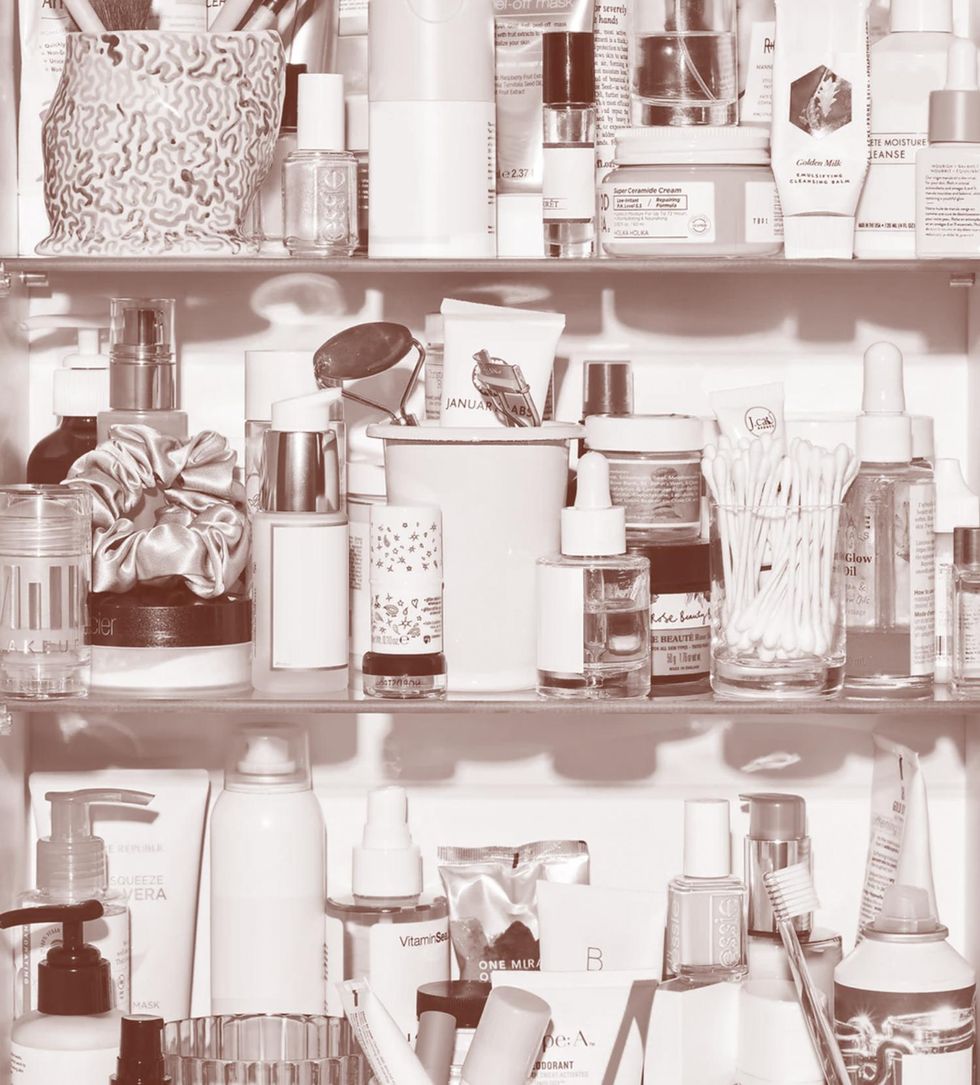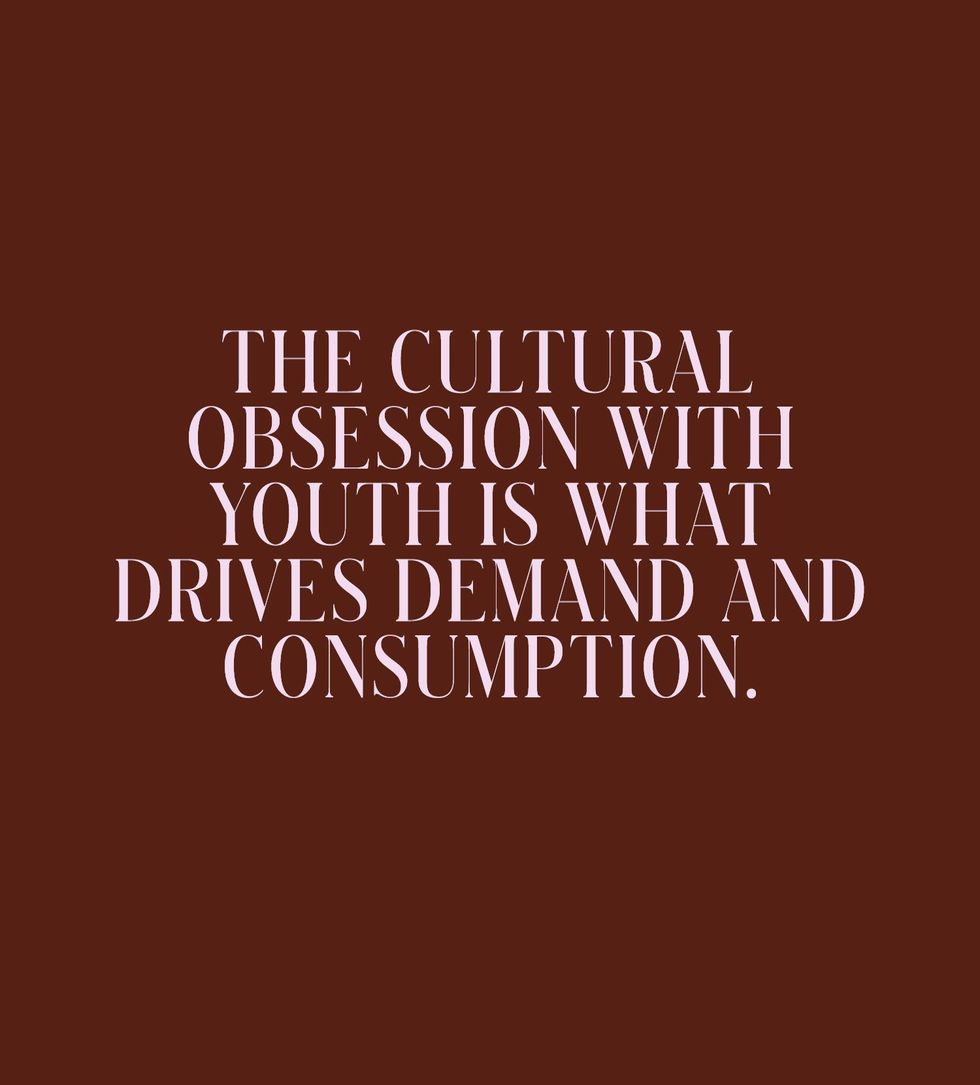Does the Beauty Industry Need a Czar?
Experts weigh in on what can be done to curb the industry's overconsumption problem.

On Monday, August 9th, the United Nations sounded the alarm. "Human beings have altered Earth's atmosphere through the indiscriminate burning of fossil fuels," detailed the report issued by the Intergovernmental Panel on Climate Change. The climate crisis is no longer a distant disaster; we're witnessing the relentless pace of the catastrophe now. California is on fire; Tennessee is underwater; the roads in Phoenix are melting. I remember gazing up outside my New York City apartment and seeing smoke from the West Coast inferno cover the sky in a layer of haze.
Without strong, fast, and sustained reductions in carbon emissions, humankind will destroy the conditions necessary for our survival. According to data from Euromonitor International, almost 7.9 billion units of plastic were used to create beauty and personal care products in 2018. Packaging materials now account for about half of all plastic waste, and data from the Environmental Protection Agency shows that only around 9 percent of plastic gets recycled, for various reasons: Many beauty products are created with mixed materials, and U.S. cities are canceling their recycling programs because of cost hikes. And, recycled or not, plastic has a life cycle that almost always ends at a landfill. The big players in the beauty industry have touted sustainability programs that focus on recycling and ethically sourcing ingredients like palm oil to cut down on carbon emissions, but are they moving fast enough?
Earlier this year, writer Elizabeth Segran wrote a piece titled "President Biden, Appoint a Fashion Czar!," arguing that the government needs someone that's delegated to regulating the fashion industry's global carbon emissions and its reliance on an extremely low-paid workforce.
This led me to wonder whether appointing someone who would be tasked to curb the beauty industry's impact on the environment and educate the public on marketing messages that fuel the overconsumption would be a feasible solution. So I reached out to climate scientists, academics, and brand founders to ask one question: What can be done?


The Great Connector
It comes as no surprise that the federal government can be slow when it comes to enacting change. "I think the main advantage of these czar-like positions," says David Konisky, a professor at the O'Neill School of Public and Environmental Affairs at Indiana University, "is that the individual can marshal together all of the different resources and approaches that the federal government might take to address an issue." Red tape and bureaucracy can create blind spots; an individual tasked with addressing the overall problem can look for ways to coordinate efforts across government agencies.
However, if there's a specific person delegated to every single industry, it could cause a bit of a problem. "You'd have 50 people running around, stepping on each other's toes," says Gernot Wagner, a clinical associate professor of environmental studies and public service at NYU. Look at the Biden administration, for example: "On the one hand, what's happening right now in the current administration is pretty amazing," adds Wagner, referring to President Biden's decision to appoint an international climate coordinator (John Kerry) and a domestic one (Gina McCarthy). "But they have competing priorities, and it can create confusion while also slowing down the process."
A United Front
On August 5th, President Biden appeared on the South Lawn surrounded by the chief executive officers of the country's three largest automakers and in front of a fleet of electric cars. Biden announced that he'd restored the tailpipe emissions standard from the Obama era, and the CEOs pledged that at least 40 percent of their new car sales would be electric vehicles by 2030, on the condition that Congress passes a spending bill to make this a reality.
"[Biden] made this announcement with the CEOs right there next to him," says Wagner. "Some might say that it was the right decision to show that he has the support of the industry. Imagine the big leaders in beauty coming together and saying, 'Look, things have to change. Let's be proactive.'"
But another, perhaps more important question that arises is whether or not the targets are less ambitious now that it has the support of the CEOs. "Could Biden be pushing forward at the pace that we need to be at to deal with this crisis, and piss off the car companies along the way?" asks Wagner.
The advantage of government intervention is the ability to act in big ways because of the authority bestowed under the law. However, according to Konisky, there are still obstacles to clear. "Agencies can only operate where they have jurisdiction," he tells me. It's up to Congress to pass laws that would give the EPA and the FDA the ability to proactively set standards and issue guidelines to significantly decrease the environmental impact of mass-produced products.
Then there's the fact that executive orders and regulations can be undone when a new administration takes office. Take tailpipe emissions as an example: Under Obama, the standard required that cars achieve 51 miles per gallon by 2025; Trump changed it to 44 miles per gallon by 2026; Biden's new standard is 52 miles per gallon by 2026. "As the government ping-pongs from one administration to the other, it slows us down," says Konisky. "Unless laws are passed that provide for continued and persistent activity, we're subject to the whims of different presidents and what they do or don't want to do on climate change."
Time isn't a luxury we have with the climate crisis. "We need to start moving now, and the government should do more to regulate these industries," says Anthony Moffa, an associate professor of law at the University of Maine Law School.
Both Moffa and Konisky agree that while corporate self-regulation pledges are nice, at the end of the day, they're just that—a pledge. "It takes more than relying on companies to do the right thing, it takes policy," says Konisky. "We need to make sure that the leaders, on every level of the government, are aligned with broader climate goals and actually pursue those policies."
Unless laws are passed that provide for continued and persistent activity, we're subject to the whims of different presidents and what they do or don't want to do on climate change."
"The Ethical Consumer"
Several companies opt for a more bottom-up approach to solving the climate crisis. "It's the idea that if consumers are demanding different kinds of products or packaging, then they could adjust their perceived behavior in ways that signal to these companies that they're willing to invest in sustainable products," says Konisky.
Writer Elizabeth L. Cline disagrees with the frame of thought that perpetuates the idea that when we buy something, we're telling companies that we want unsustainable and unethical products. In a piece for Atmos, Cline defines an ethical consumer as a person who believes "that we are slowly and inexorably driving business and society to be more responsible, one purchase at a time." To Cline, the concept stands on shaky ground for several reasons, one being that according to the logic of this belief system, some of the world's biggest problems—racism, climate change, misogyny—continue to persist because we don't shop at the "right" stores.
Additionally, the ethos behind an ethical consumer narrative suggests that your purchases signal something about your moral identity. "...Where we get ourselves in trouble is in viewing shopping as a moral act—and viewing shopping at a cheap chain store that has poor business practices as an immoral one," she writes. "Consumption is an economic imperative...and it's fundamentally determined by our income...it's unacceptable and arguably deeply unethical itself to ever tie human 'goodness' to what we buy."
This belief also assumes consumers have endless options when it comes to what and where to buy. Sarah Shermyen, a four-year doctoral candidate at the University of Georgia, has tried to make her entire beauty routine more green, but she's run into several obstacles. "I'm allergic to chemical sunblock," she tells me. "The only physical sunscreen that doesn't leave a white cast on my skin comes in a plastic bottle. It's just what I have to use."
Cline doesn't believe that her argument is an excuse to grow dejected and give up; it's a way to attack these overarching issues through measures that create long-term change. "Would the problem you're trying to address with your shopping cart be better tackled by a new rule, a new regulation, a ban, an incentive, a new social program, a different way of doing things?" she asks. "The answer is almost always yes."
Julie Schott and Cathryn Woodruff, co-founders of Plus, a plastic-free personal-care brand that recently launched a dissolvable body wash, agree that the onus should be put on the company. "The bottom line is if you can take the responsibility off the consumer, then you're solving the problem from the ground up," says Schott. "The goal with Plus was to eliminate the packaging because the consumer doesn't know how to dispose of it. And even if they do, it most likely won't get recycled."


The Marketing Machine
There are buzzwords—think sustainable, eco-friendly, green, zero-waste—that brands slap onto their labels without fully explaining what these words actually mean in the context of their company. Some say brands purposefully mislead consumers to boost their bottom line in an overly saturated industry. And while beauty brands may not have industry-specific regulations around labels and marketing tactics, Moffa points out that the government does have general rules on false claims in advertising. "Getting products that have false claims about their environmental benefits pulled off this shelf is something we should do," he says, "but it's not going to do much to move the needle on climate change since the product has already been manufactured." A more proactive approach is needed.
Making headway on the climate crisis also involves shifting the current norms around beauty and aging. "We're promised this idea of being able to hold on to perfection," says Shermyen. "You might find a routine where you're like, 'Oh my god, I've fixed everything' for a few months, and then it stops working and you move on to another product that promises flawless skin." The cultural obsession with youth is what drives demand and consumption. "If the objective is to consistently look young," says Moffa, "then you're going to have to continuously keep buying the product."
Underlying the anti-aging fixation is the intensity of how we've conflated class and wealth with the progression of age. "It's always been there, but now we've taken it to the next level where you can circumvent the entire aging process," says Shermyen. "It isn't flashy the way displays of wealth were in the early aughts. Rather than saying, 'I have a Birken,' it's 'I'm going to amaze you when I tell you how old I am.'"
Clear, plump skin is a way of asserting status, and it's been veiled in language rooted in the concept of self-care. "You start hearing and using language like 'investing in your skin,'" says Shermyen. These are phrases that perpetuate the assumption that if you aren't using countless products on your skin, then you're not working hard enough to care for yourself, or that you're failing to "empower" yourself with the tools necessary to soothe stress and anxiety.
The fear of aging is typically linked to a fear of death. Shermyen believes the comparison is too profound: "I don't think it reminds us of our mortality; it's just an actual fear of showing wear." But it's difficult to place the blame solely on consumers for feeding into these ideas. For people, especially women, youth is a currency that gives you social status, and no one wants to become invisible.
There's also political weight added onto one's decision to use or abstain from beauty products; it's similar to the assumption that where you shop says something about your moral code rather than your income status. "Nowadays, if you decide to show that you're aging, it's seen as a political statement," says Shermyen. "Until we take this weight and meaning off, I'm not sure how we're going to change these socio-cultural beliefs and collectively cut our consumption."
Rather than saying, 'I have a Birken,' it's 'I'm going to amaze you when I tell you how old I am.'"
A Multi-faceted Approach
The experts I spoke to agreed that it'll take several actors collaborating to create change. According to Moffa, given the fact that the presidential political winds change frequently, we need private and public governance, on all levels, to tackle the climate crisis.
"Assuming we're not going to have a revolution," says Walter Robinson, professor and co-director of the Climate Change and Society Program at NCSU, "focusing on where money and resources get invested is huge. People with a lot of capital to put on the table have to stop putting it into mines, fossil fuels, and natural-gas pipelines." He also points to the fact that there are resources out there, like Project Drawdown, that list steps that the government and corporations can take to address the climate problem.
Taking collective action—whether it's calling your elected officials or donating your time or money to organizations on the ground—and putting pressure on those in power is our best bet to reach a solution. There are people who will say that it's unrealistic to commit to substantial, drastic change on this tight of a deadline, but nothing important has ever been won without those who had the vision to see beyond the constraints of their current situation. Developing and distributing a vaccine in under a year was also thought to be impossible. "If there's any hope to be had," says Dr. Robinson, "it's in the fact that we are not destined for an apocalypse. It makes sense to try to avoid one."
Actionable Steps You Can Take
- Vote for candidates who are committed to addressing the climate crisis.
- Call your local, state, or national elected official and urge them to act immediately on climate change. (You can search for your representatives here.)
- Donate your time and/or money to grassroots climate organizations like Climate Justice Alliance, Indigenous Environmental Network, and Greenaction for Health & Environmental Justice.
- Organize within your local community to build political support for climate action.
Want more stories like this?
What to Do If You're Feeling Overwhelmed by Climate Change
A Complete Guide to Carbon Neutrality in Beauty
What's Earth Day All About?




